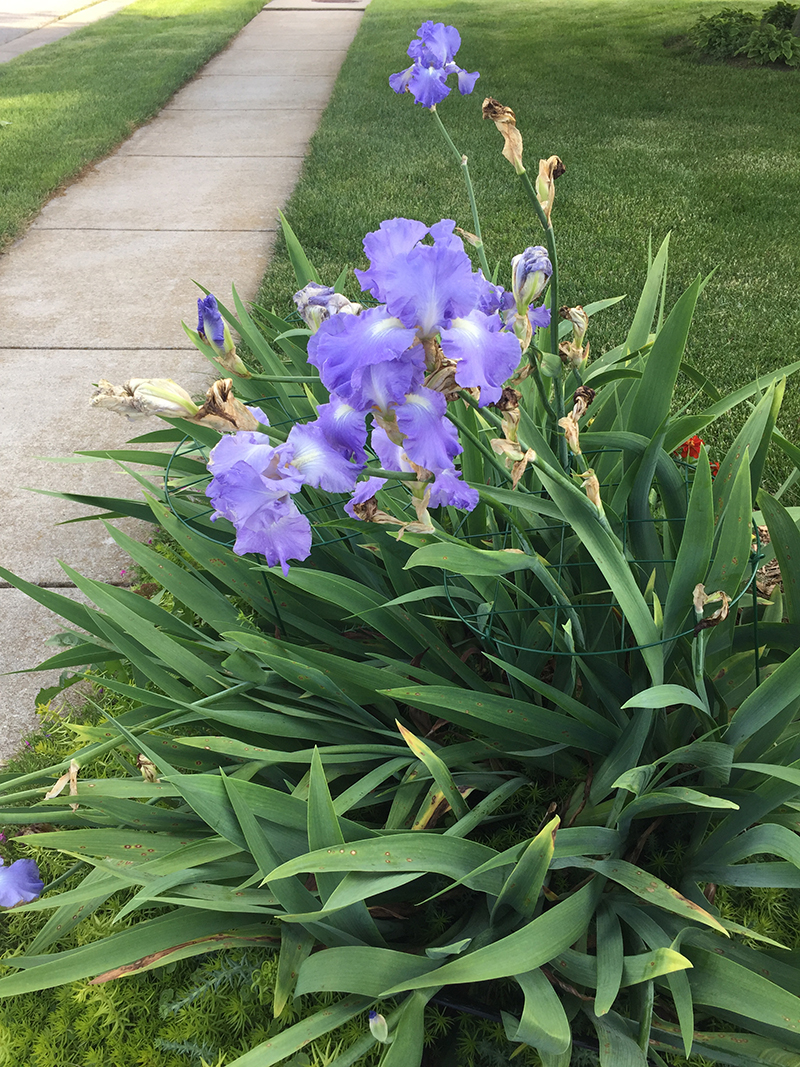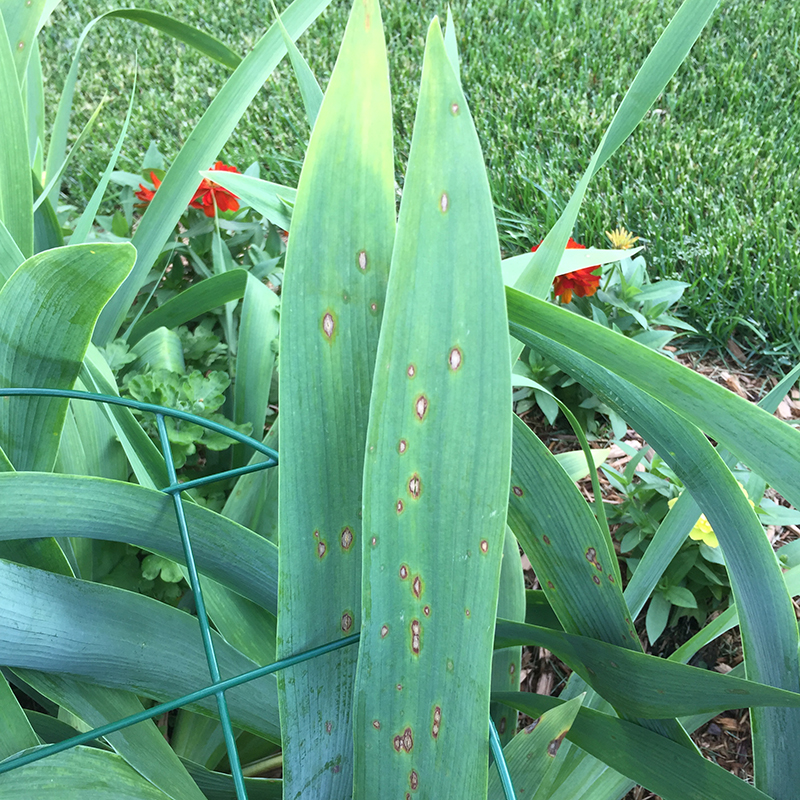Picture of the week
May 8, 2023
Iris Leaf Spot
Gail Ruhl, Plant Disease Diagnostician, retired
Leaf spots caused by the fungus Cladosporium iridis are a common sight on iris. Small, water-soaked lesions develop rather rapidly into 1/2-inch- long spots with brownish purple centers and yellow margins. The spots are usually observed more on the upper half of the leaves, however, if plants are crowded and wet weather prevails, the spotting may appear earlier in the season, covering more of the leaf and causing more damage. Premature leaf death will weaken the rhizomes or bulbs.
The fungus spreads from diseased to healthy leaves during the summer primarily via splashing water. For this reason, infected leaf tissue should be removed as soon as it is observed. In addition, it is important to avoid overhead watering of foliage, to work with plants only in dry weather, to space plants in order to promote good air circulation and to use more resistant species. Since the fungus over-winters on plant debris, it is especially important to remove infected leaf and flower stalks in the fall.
click on image to enlarge




